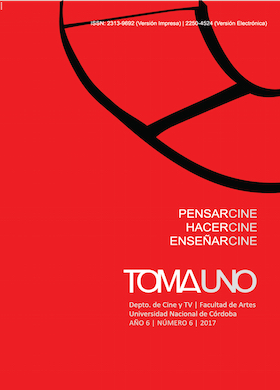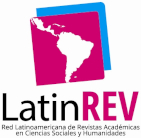Slashing the images, the words, the sounds, the voices.
About 2 de octubre / Lejos de Tlatelolco, from Los ingrávidos
DOI:
https://doi.org/10.55442/tomauno.n6.2018.20901Keywords:
Los ingrávidos, Tlatelolco 1968, Political modernism, Experimental cinema, Rhetorics of breakAbstract
Los Ingrávidos is a Mexican politically engaged film collective borned in 2011. Relying on Internet platforms for self-distribution, their work has recently gained critical attention and wide visibilization in experimental film festivals and other venues. They see their own work as a practice oriented to counter the so-called sovereingty of the governmental image of violence in Mexico through a pedagogy of the dissident image. A bold number of their films are titled following the same simple structure: one term is ‘slashed’ by another. This structure is key to undestanding the complexity of their poetics. The slash stablishes a relation between two fragments, but the nature of this relation is not given beforehand. Through an analysis of the functions of this slash in one of their short films, 2 de octubre / Lejos de Tlatelolco, I read this sign as a way to overcome the aporias set by the poetics of disjunction and binary oppositions that structured counter-cinematic rhetorics of break during the 60s and 70s, in ways that manage to maintain both their critical potency and the horizon of emancipation; both a reivindication of the formal legacy of political modernism and a certain discursive ambivalence and power of affection.
Downloads
References
Avilés Casasola, J. (2015) Símbolos para la memoria, Tesis doctoral UNAM, descargable en línea en http://132.248.9.195/ptd2015/febrero/401059003/Index.html, consultada el 15 de marzo de 2018.
Ayala Blanco, J. (1971). “Una película de cárcel que habla de libertad”, Cine Cubano no. 66-67.
Bonitzer, P. (2007). Desencuadres: cine y pintura. Buenos Aires: Santiago Arcos.
Daney, S. (2002). ”From Projector to Parade”, Film Comment; Jul/Ago 2002, vol. 38 no. 4, pp. 36-39 (orig. pub. “Du défilement au défilé”, La Recherche photographique, no 7, 1989).
Daney, S. (2016). “Una tumba para el ojo (Pedagogía Straubiana)” en Jean-Marie Straub y Danieèle Huillet, Hacer la revolución es volver a colocar en su sitio cosas muy antiguas pero olvidadas, Madrid: MNCARS, pp. 33-42.
Debuysere, S. (2016). Figures of Dissent. Cinema of Politics, Politics of Cinema. Gante: AraMER.
Deleuze, G. (1995). Conversaciones. Valencia, Pre-textos (orig. pub, en Cahiers du Cinéma, no. 271, Noviembre, 1976).
Didi-Huberman, G. (2009). Cuando las imágenes toman posición, Madrid: Antonio Machado Libros.
Draper, S. (2014). “Continuar el 68 por otros “medios”. Arquitectónica y óptica de poder en la cárcel de Lecumberri”, en Elixabete Ansa Goicochea y Óscar Ariel Cabezas (eds.), Efectos de imagen. ¿Qué es y qué fue el cine militante?, Santiago de Chile: Lom Ediciones.
Fernández Savater, A. (2018). “Mayo del 68, ‘futuro anterior’”, en Diario Público, 14/10/2007 - http://blogs.publico.es/dominiopublico/51/mayo-del-68-futuro-anterior/, recuperada el 25/05/2018 .
Fernández Savater, A. y Cortés, D. (2008). Con y contra el cine. En torno a Mayo del 68. Sevilla: Universidad Internacional de Andalucía et al. Godadrd, J-L. (1980). Introducción a una verdadera historia del cine. Madrid: Alphaville.
Harvey, S. (1982). “Whose Brecht? Memories for the Eighties”, en Screen, Vol. 23, Issue 1, pp. 45–59.
Incarbone, F. (2014). “Un nuevo abecedario”, en BIM. Bienal de la Imagen en Movimiento. Memoria 2014. Buenos Aires, EDUNTREF, pp. 71-76.
La Parra, P. (2016). Presentación de Europa futuro anterior (http://europafuturoanterior.com/, consultado el 20 de marzo de 2018).
Mestman, M. (2013). “Las masas en la era del testimonio. Notas sobre el cine del 68 en América Latina”. En Mariano Mestman y Mirta Varela (coords.), Masas, pueblo y multitud en el cine y televisión, Buenos Aires; Eudeba, pp. 179-215.
Metz, C. (2002). Ensayos sobre al significación en el cine, vol. 1 (1964-1968). Barcelona: Paidós.
Pacheco, J.E. (1980). Tarde o temprano (Obra poética reunida). Ciudad de México: Fondo de Cultura Económica.
Pastor, J.; Garí, M. y Romero, M. (eds), (1968). El mundo pudo cambiar de base. Madrid: Catarata, 2008.
Poniatowska, E. (1971). La noche de Tlatelolco. Ciudad de México: Ediciones ERA.
Ranciére, J. (1976). “L’Image Fraternelle. Entretien avec Jacques Rancière”, en Cahiers du Cinéma 268-269 (1976): 19.
Ranciére, J. (2014). The Intervals of Cinema, Londres, Verso.
Rodowick, D.N. (1994). The Crisis of Political Modernism. Criticism and Ideology in Contemporary Film Theory. Berkeley: University of California Press.
Ross, K. (2008). Mayo del 68 y sus vidas posteriores. Ensayo contra la despolitización de la memoria. Madrid: Acuarela y Antonio Machado Libros.
Steinberg, S. (2011). “Re-cinema: Hauntology of 1968”, en Discourse, 33.1, Winter 2011, pp. 3–26.
Steyerl, H. (2003). “La articulación de la protesta” en Transversal, http://eipcp.net/transversal/0303/steyerl/es (recuperada el 4 de enero de 2018).
Vázquez Mantecón, Á. (2012). “Nuevas historias oficiales: el caso del Memorial del 68 en México”, en E. Pani & A. Rodríguez Kuri (Eds.), Centenarios. Conmemoraciones e historia oficial. Ciudad de México: COLMEX, pp. 371- 380.
Vázquez Mantecón, Á. (2012). El cine súper 8 en México. 1970-1989. Ciudad de México: UNAM.
Windhausen, F. (2018). “Deframing Evidence: A Transmission from Los ingrávidos”, en Nicholas Baer, Maggie Hennefeld, Laura Horak, y Gunnar Iversen (eds.), Unwatchable, Nuevo Brunswick, Rutgers University Press, 2018.
Wollen, P. (1986). “Godard and Counter-Cinema: Vent d’Est”, en Phillip Rosen (ed.), Narrative, Apparatus, Ideology, Nueva York: Columbia University Press, pp. 120-129 (orig. pub. Afterimage no. 4, 1972).
Downloads
Published
Issue
Section
License
Copyright (c) 2018 Miguel ErrazuThis work is licensed under Creative Commons Attribution-NonCommercial-NoDerivs 2.5 Argentina .


































